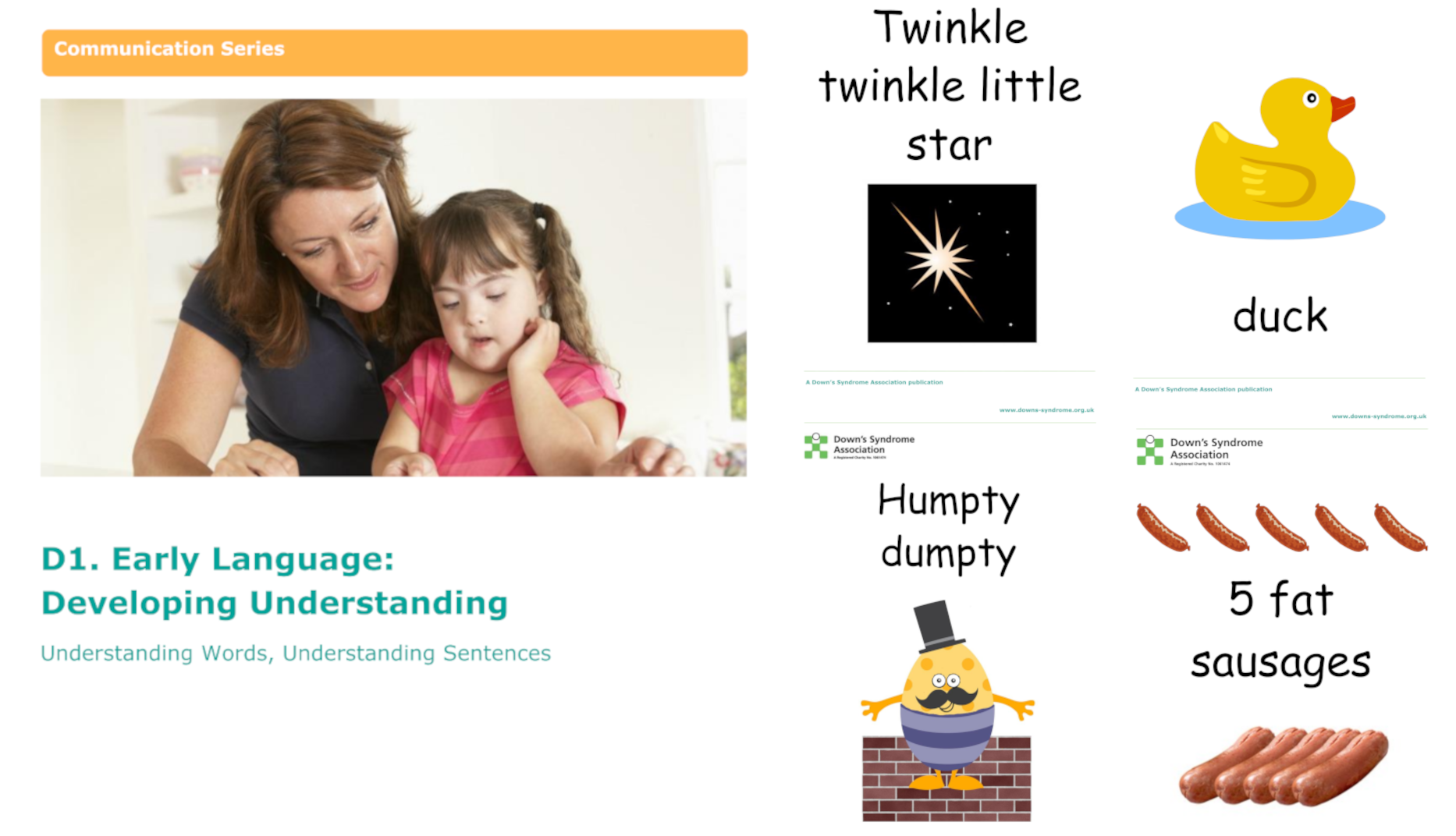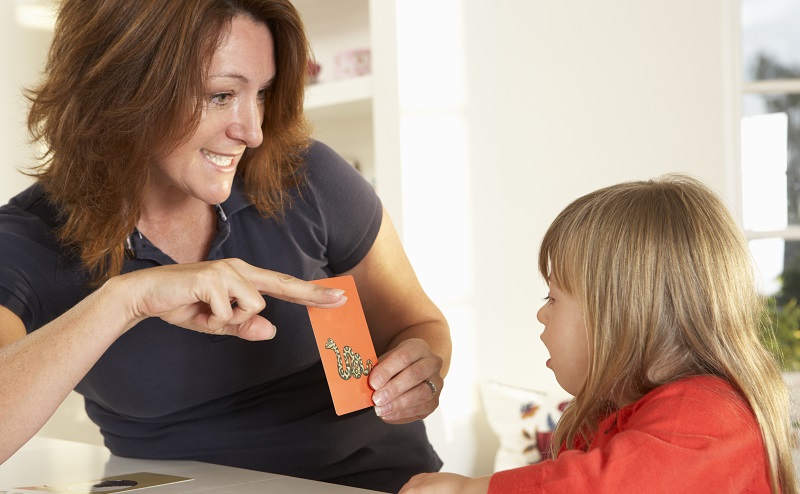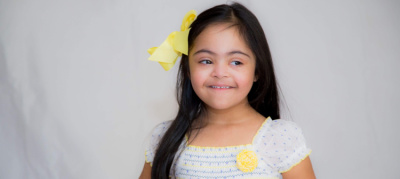Communication series
These resources, co-written with a speech and language therapist, offer practical tips and activities for supporting children and young people with Down’s syndrome to develop their communication skills.
The series includes resources for supporting communication, language and speech development and can be used by families and professionals alike.
There are many ways for you to help your child’s speech, language and communication development. You will find lots of ideas in this Communication Series.

Early language
Introduction
Make communication part of everyday life
Use the ideas summarised in this series every day, when feeding, bathing, changing and playing.
You will already be doing many of these activities, as part of caring for your baby.
However, interactions between parent and child can happen less when your baby has Down’s syndrome.
That’s why it is helpful to use some specific strategies when interacting with your baby or child.
Make communication visual

Support your child’s spoken communication with lots of visual cues.
For example, you can use gestures, objects, pictures and photos alongside speech, when you interact with your child.
You can also learn a signing system (such as Makaton and Signalong). Sign and gesture will help your child to understand what you are saying, and will also help your child to communicate. Ask your speech and language therapist about where you can learn to sign.
There are also great online resources where you can learn to sign, including Mr Tumble (CBeebies- BBC).
Signing along with Mr Tumble is a fun way of learning simple sign language.
Watch your child carefully and respond

Watch your child’s behaviour very closely, and respond to her ways of communicating.
She may be smiling, making noises, looking and/or gesturing.
Copy your child. Tell her the word and make the sign for what she is interested in.
Parents do this naturally, but it helps to watch children with Down’s syndrome very closely, because their attempts to communicate can be more subtle or take longer.
Be animated
When your child tries to communicate, respond enthusiastically.
Smile, use lots of facial expressions, vary the tone of your voice and use gesture/signs.
Being animated will help your child to pay attention to your facial expressions, words and gestures.
Be repetitive

Use lots of repetition. When your child communicates, copy what he has said or done.
For example, if your child is interested in a dog and says “d” (or any other sound), repeat back, “Yes! Dog!”.
Do the same thing with gestures and signs.
If your child tries to speak or sign but it’s not quite right, respond by saying the correct word and making the sign.
Be on your child’s physical level
This helps you to see what your child is watching and interested in.
It also helps your child to focus on you – to listen and pick up on cues, like your facial expression and how your lips and tongue move when you make sounds, talk and sing.
Take time

Children with Down’s syndrome often need extra time to respond.
Watch carefully, pause and wait when interacting with your child.
It may take him longer to process what he sees and hears. It may also take him longer to respond by moving, gesturing, signing, vocalising or speaking.
Always give your child extra time. Slow down your own talking too.
Praise and reward
Most children enjoy social interaction. Give your child lots of praise and smiles to show that you are pleased.
She may enjoy other rewards too, like a favourite expression, song or activity.
Praise will encourage your child to communicate.
We Can help
If you have any questions about speech, language and communication please contact us using Tel: 0333 1212 300 or Email: info@downs-syndrome.org.uk.
If our Information Officers are unable to help, they will refer you to our Advanced Clinical Specialist Speech & Language Therapist, Gwendolina Toner.
